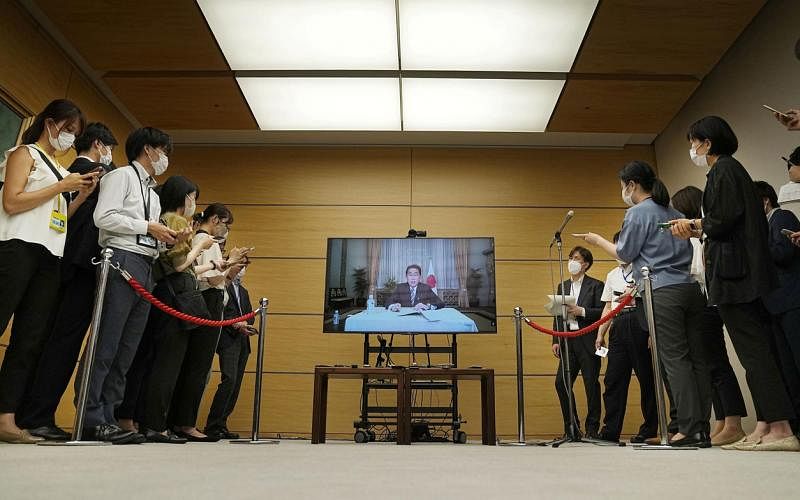
(Morning Post) The situation in Japan's seventh wave of crown disease is still severe, but the Japanese government revealed on Saturday (August 27) that it is considering allowing patients with non -symptoms to purchase daily necessities.
Kyodo News reported that the deterioration of the Japanese crown disease has led to a surge in the number of home isolations. The Japanese government is considering allowing patients with non -symptoms to go out to buy necessities, provided that they must abide by epidemic prevention measures such as wearing masks.
Japanese Prime Minister Kishida said that the official will "conclude after full discussion."
The Japanese modern website reported that as of Friday (26th), the national crown disease death cases from Japan exceeded 200 for 11 consecutive days.In the seventh round of epidemic in early July, Japan's cumulative death cases increased to 5277 within two months.The new death case reported on August 23 was 343, and the highest record since the outbreak of the epidemic.
Experts from the Ministry of Health and Welfare and Welfare of Japan analyzed that the possibility of Japan's infection is very low in recent times.Experts from the department have shown that the Japanese epidemic is still at the level of high communication, "especially the death cases are still increasing rapidly."
In order to activate the social economy to "loosen"
Although the epidemic situation is severe and cannot be greatly eased in the short term, Japanese officials plan to relax epidemic prevention measures in order to re -activate the socioeconomic economy.
Kishida announced on the 24th that local governments could judge independently and only reported only patient information with high risk of severe illness.At the same time, the Japanese government will relax entry restrictions.Starting from September 7, as long as the three -dose vaccination can be proved, there will be no need to submit a 72 -hour nucleic acid negative certificate when entering Japan.
In addition, the official also plans to allow the number of isolation days of symptomatic patients from 10 days to seven days, and asymptomatic infections are shortened from seven days to five days.



